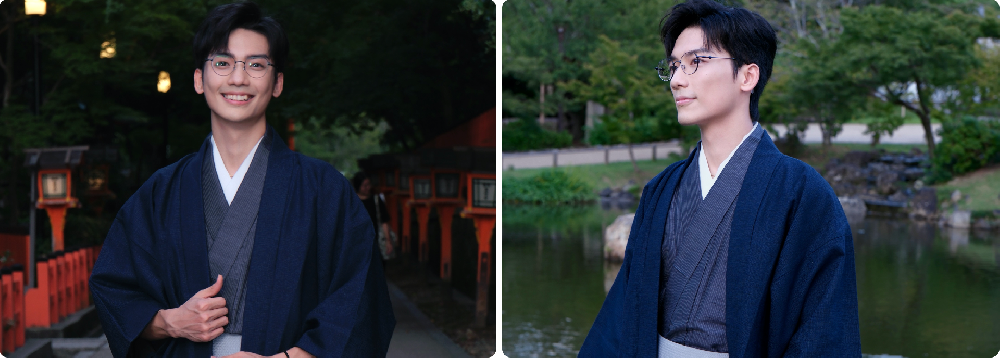
**Men's kimono (men's clothing, おとこぎもの) ** is a kind of traditional Japanese clothing that symbolizes simplicity and elegance, characterized by simple design and neat lines. Compared with women's kimonos, men's kimono pays more attention to low-key and practicality. The following are its main characteristics:
1. Colour
• Men's kimono is mainly dark, such as black, gray, blue, brown, etc., showing a sense of stability and maturity.
• There are usually fewer patterns, mostly plain or low-key geometric patterns, emphasizing the beauty of simplicity.
2. Structural design
• Simple tailoring, straight lines, overall looseness, comfortable to wear.
• The sleeves are short and close to facilitate daily activities.
3. Fabric for making clothing
• Natural fabrics such as cotton, hemp and silk are commonly used to meet the needs of different seasons. Wear a light bathrobe in summer and a thick kimono in winter.
4. Components
• Feather knitting (coat): Short jacket with a hood and kimono, often used on formal occasions.
• Hakama (skirt): Trouser skirts worn on specific occasions (such as weddings or tea ceremony) to add a sense of formality.
• Belt (belt): The belt of men's kimono is relatively simple, and the "horn belt" is usually used.
5. Occasion
• Formal occasions: worn at weddings, New Year's ceremonies, tea ceremonies, often with feather weaving and hakama.
• Daily occasions: Simple kimono or bathrobe are mostly used for home, festival or hot spring travel.
6. Symbolic significance
Men's kimono symbolizes tradition and identity, especially in Japanese cultural activities such as tea ceremony and drama. Men's kimono is the embodiment of etiquette and culture. Its simplicity and elegance add another unique charm to traditional Japanese clothing.